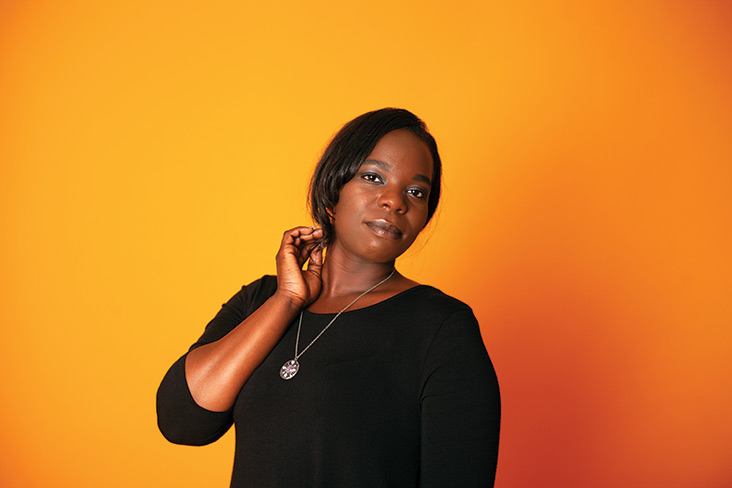Downtown’s quirks challenge housing

The cash flow potential is incredible. “Beds” in the two-, three- and four-person apartment complexes shooting up across downtown Columbia are renting for north of $500 to $600 a month.
For a 150-bedroom complex, the grand total revenue per year easily crosses into the seven figure threshold. With it comes new tax revenue for the city, county, the Columbia Public School District and, on top of that, more for various utility providers.
Privately owned and therefore squarely on the tax rolls, these new complexes are another rearrangement of downtown Columbia. For better or worse? Opinions vary. Private developers have seized an opportunity, still there are questions and concerns.
With the ongoing repurposing of various formerly low-profile central business district tracts into multistory, mostly student-occupied apartment complexes, resourceful developers have found a goldmine on a per-square-foot basis compared to the receipts that accrued to their previous owners.
Downtown apartment development has evolved into one of those typical Columbia dust ups involving the usual cocktail of land owners, developers and neighborhood associations mingling with various city agencies shepherded by their respective legal counsel. The process is just beginning because there are many tracts ripe for development on the edge of the business district.
Until deregulation in 1966, the University of Missouri required students to live in units approved by its Housing Office. This included dormitories, fraternity and sorority houses and “approved” off-campus apartments. Columbia’s first high-rise apartment building — Manor House on Hitt Street, built in 1963 — catered to “professionals” and not students, and what was available off campus was typically a room in a private house in the East Campus area. Tucked in close to campus were several legacy buildings including the Dumas and Belvedere apartments. Exceptions were rarely granted, and for awhile, MU bravely kept up with surging enrollments by building dormitories.
1966 brought the surge in off-campus apartment developments. Columbia Terrace — the first and best-situated private development — replaced a cluster of frame houses at the northeast corner of Matthews Street and University Avenue and opened in the fall of 1966 across the street from the White Campus. By 1970, major complexes included White Gate Village, Broadway Apartments, Briarcrest, Gatehouse, Holiday House and Tiger Village. There were dozens of smaller developments, and one area south of Ashland Gravel Road carried the sobriquet “Sin City.”
Suite living
With recent surges in enrollment, off-campus developments have become more luxurious and feature oriented. The current living arrangement includes a common area, kitchen and individual bedrooms, plus bathrooms. Privacy is compromised somewhat so suite-mate compatibility figures in the success or failure of this new mode of off-campus living.
Now that the suite concept has invaded downtown Columbia, it will be interesting to watch the competition unfold between close-in complexes touting proximity to campus against such deluxe features of the suburban developments as pools, club houses and even sand volleyball.
Planting a thousand or more students across downtown Columbia raises concerns. Downtown Columbia is still a “village” to many of us with substandard distances between its blocks, growing traffic congestion and the delivery vehicle conundrum.
There are concerns about building architecture and appearance; some are upset by the creeping “canyon” effect as these new apartment buildings are placed as close to the street as the law allows. While codes are observed, these mostly wood frame structures raise concerns about safety. One parent was heard to ask, “Would you want your son or daughter living in what looks like a flimsy fire trap?”
And there are other matters to consider. How will these structures hold up over time? What happens if student enrollment declines? Is Section 8 in their future? Can they be converted into traditional apartments for occupancy by older residents?
Then there are still evolving controversies about parking and transportation. One wonders how willing some of these downtown student residents may be about walking to class if the distance involved is more than half a mile. Viable public transportation will figure in their success.
Over the years, the university and both colleges have acquired a great deal of private property, some of it by eminent domain. Enclaves of single family homes on Kuhlmann Court are but a memory, while shady streets formerly lined with majestic private family homes — Virginia Avenue is one I remember — are simply not there any more.
Neighbors may hold off development as long as possible to preserve near northeast side enclaves such as Hubbell Drive and St. Joseph Street. Other areas ripe for development within walking distance of the university include portions of Waugh and Paquin streets. It’s probably inevitable that some investor’s checkbook will carry the day with an offer that’s simply too sweet to refuse.
It’s all part of Columbia’s history and with it will come another fiery controversy.


